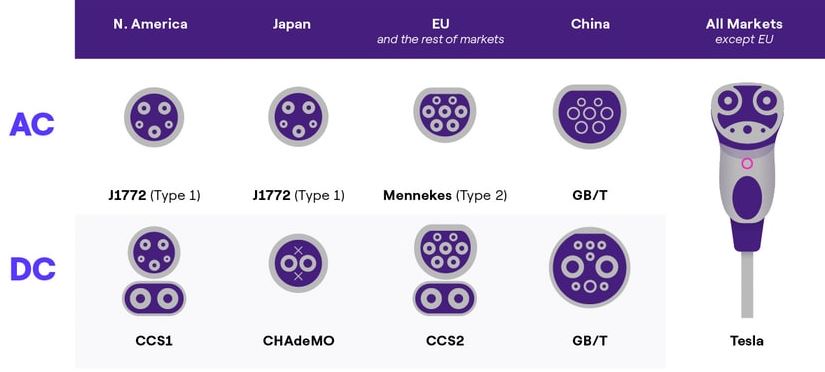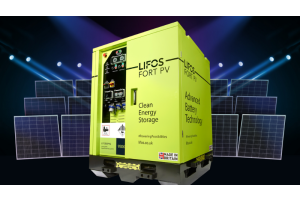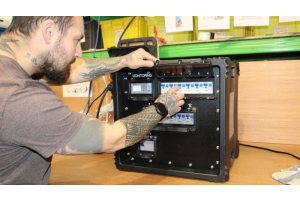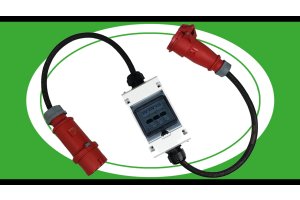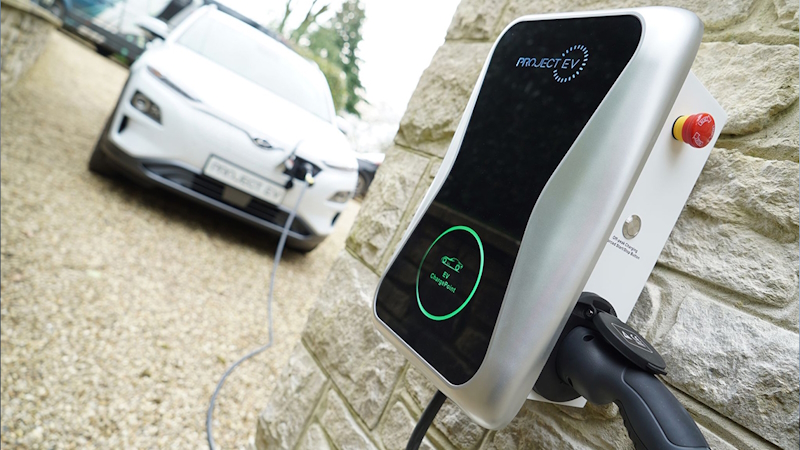
What are they?
EV Chargers are devices that will connect to your car, providing mains electricity to re-charge the onboard battery. They can be found at home, at the workplace, or in public parking lots. There are several types of EV Chargers, sometimes described as Fast, using AC current, and Rapid / Ultra Rapid using DC current.
Whether or not they are named like this, you need to look out for the charging speeds. These are quoted as "per kWh". A "Fast" charger uses AC electricity and typically charges at a rate up to 22kWh. A Rapid or Ultra Rapid charger is much better and will charge from 40kWh to 150kW using DC current. Some public chargers can reach as high as 300kWh.
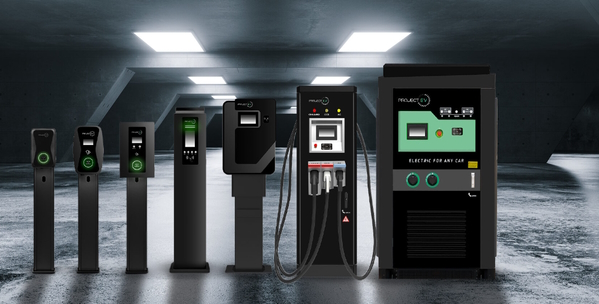
What does per kWh mean?
When choosing an EV charger, it’s important to consider the charging speed and this is what "per kWh" means. If you have a 10kW Battery in your car and you used a 10kWh charger, your car would charge from 0 to full in 1 hour.
Using this rule, you can understand the charging time of your electric vehicle.
Most Fast Chargers are used at home for overnight charging or for a top-up, as their charging speed is quite limited in todays speak. Rapid and Ultra Rapid chargers using DC are more common around service stations and their rate of charge can allow you to fully charge your EV in minutes, not hours.
EVs offer several advantages over traditional ICE (internal combustion engine) vehicles, including lower operating costs, reduced emissions, and a quieter and smoother driving experience. They also require less maintenance and have fewer moving parts, which can reduce the likelihood of breakdowns and extend the lifespan of the vehicles that use hydrogen fuel cells to generate electricity. However, the only difference you need to know is that the range of electric vehicles is not as high as an ICE vehicle and the time it takes to replenish a battery is greater than a quick trip to the petrol pump.
So how many miles is that?
This is difficult to answer as it depends on a few factors. The size of your car battery, the car itself and the way you drive.
For example, some cars come with larger batteries than others. This increases the overall range, but range can also be dependant on other criteria. Larger cars are heavier and would require larger batteries to achieve the same distance of a small car. Finally, unlike internal combustion engines that already heat up the cabin, an Electric Vehicle would need to use the drive battery to heat the car, ultimately reducing the range.
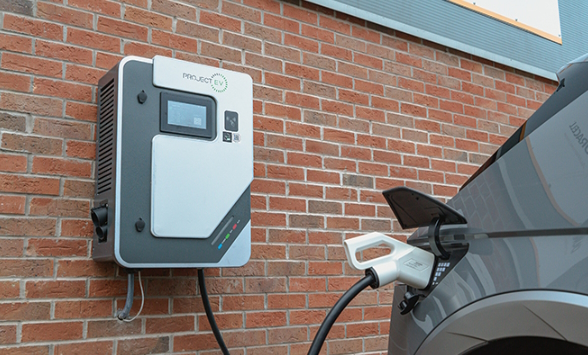
All these factors now need to be considered, while battery ranges yield fewer miles than Petrol / Diesel Cars. But as the UK moves closer to 2030, when petrol and diesel cars are no longer manufactured, electric vehicles will get better and become more widely available.
What do we sell?
Here at Essential Supplies, we’re keeping up with your charging needs as the ever-increasing popularity of eco-friendly electric vehicles rises. We sell Fixed EV Chargers, Portable EV Chargers, EV Charging Cables, EV Charging Adaptors and EV Charger Accessories.
Our Portable EV Chargers are designed for businesses that need to move chargers around, or use in a temporary placement. For example, when holding an event at a country house with many guests parking up, they can be dropped in to provide additional EVs with facilities where chargers are not normally found.
EV Charging Cables are used to connect the charging station or outlet to the electric vehicle to allow for charging. They are 5 metres long as standard however longer cables are also available. We provide from 5m - 15m. There are different types of EV Charging Cables, and the type of cable you need depends on the charging speed and the type of connector on the vehicle. The types of EV charging connectors are:
- Type 1 Connectors are typically in older Japanese cars. (We provide type 2 to type 1 charging leads).
- Type 2 Connectors are the most common around the UK and they provide medium to fast charging at home or on the move.
- CHAdeMO Connectors are Rapid Connectors for up to 100kWh charging rates.
- CCS2 Connectors are Rapid and Ultra Rapid, for up to 300kWH charging rates.
- Finally, Tesla utilse their own connector type in all markets of the world.
It is important to ensure that the charging cable is compatible with both the charging station and the vehicle to avoid any compatibility issues. This handy diagram illustrates the different types:
Suffice to say, your Electric Vehicle is likely to have both an AC and a DC charging port. So you'll have the ability to fast charge or ultra rapid charge up your drive battery.
Electric vehicle charger mounting posts have many advantages, one of them is that they can be installed in areas where space is limited or where a traditional stations cannot be installed. They provide charging access from multiple sides, and are typically installed on a ground mount that is buried in the floor. The ground mount is designed to accommodate the incoming power underground and secure the charger from theft with bolts.
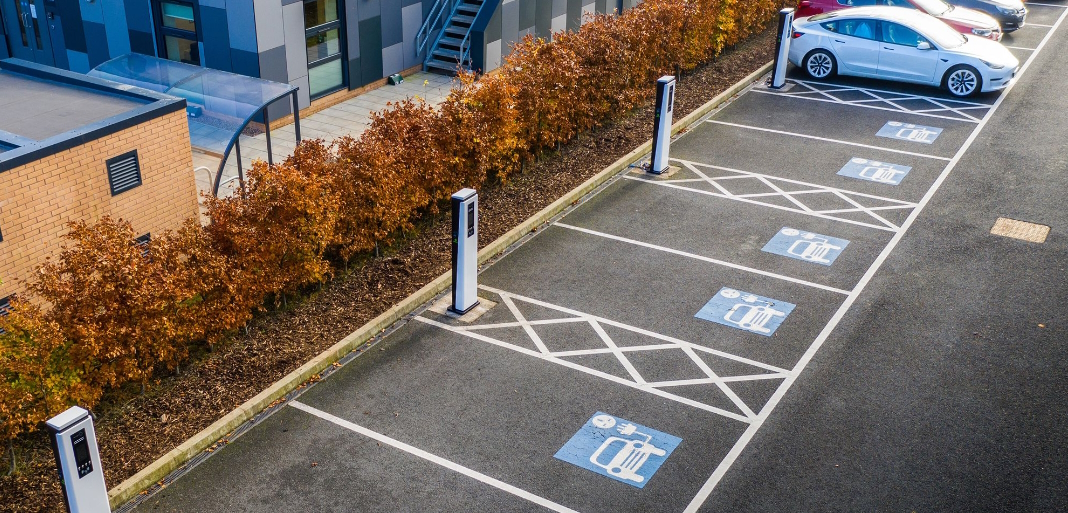
Chargers and Apps
Well here's where its slightly looking like the wild west. There are more EV Charging companies than there are brands of cars. But don't dismay, they all follow a similar way of working. You can simply arrive at a charging station, scan a code with your card or tap your credit card and start a charging session. You'll be billed for what you take.
Some app based solutions will allow you to sign up and find their network of chargers. They'll offer better rates to get you on their network and some also take a fixed amount into their purse, which you use and top-up as you go. Monta are notable for this however you can bypasss handing over a fixed amount and just register your credit card. That way they'll only charge you for what you take.
Be mindful though, some charing points will charge a connection fee and an idling time. Idling is when your car has finished charging and you've not collected it yet. Every hour that passes may incur an additional cost for taking up their charging bay.
Finally, if you're looking to monetise your own charging station. Maybe you want to install at your business to offer staff or the public a solution to charge their car, the news is good! Its simple to set-up an account with a provider whom, for a small monthly fee, they can get you started on your journey to monetise your investment. Once you've chosen your provider, you'll be introduced to their eco-system where you can create chargers, locations, users, user groups, tariffs. All this will enable you to build a portfolio of charging solutions and become an enterprise provider of car charging in the UK. More on this in our other blog, monetising Electric Vehicle Charging!
In Summary
If you're new to the world of EV Charging, this is an exciting time for you. EV charging is becoming a community activity, aside from what you learn here, there's no better way to educate yourself than to speak with someone else charging at a service station. The stories are revealing, as we try to help one another on our journey.
If you're making a long trip, Zap Map or Google Maps should be your go to for planning your routes. Make sure to check charging points are in service and check the costs. Be weary that some chargers cost more than others as they charge at a faster rate, also check for idle times. This means when the car has finished charging, a fee is applied for every hour afterwards. Some London locations do this as a parking charge since London is a premium. In fact, be careful of extortionate kWh charges for the sake of a parking charge. Make sure you are benefiting from the being there.
Keep a good supply of Apps ready to go in your Smart Phone and be mindful of underground parking as you might not get mobile data reception. If thats the case, you need to snap a picture of the chargers name and serial so when you are connected, you can start your charge
Finally, it is ultimately a culture change, moving from petrol tanks to battery packs. Time will now factor in, so mitigating the issue of a low battery can be accomlished by always keeping your battery topped-up.

